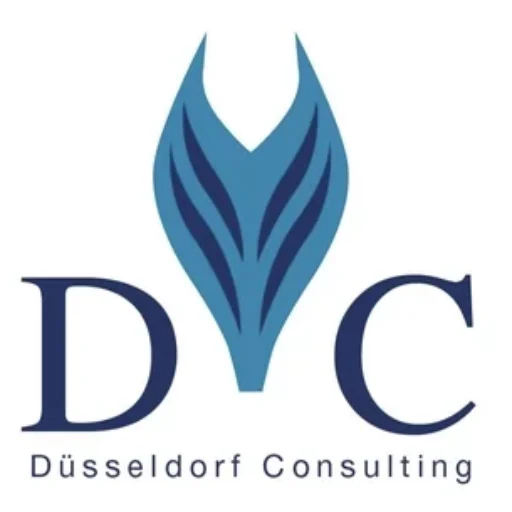Germany has emerged as a crucial hub for edge computing due to its dense population and prominent industrial centers. The country’s thriving manufacturing and automotive sectors drive the demand for innovative edge computing solutions.
The integration of industrial automation solutions with edge computing enables faster data processing and analysis, supporting Germany’s industrial and economic growth. As a result, advanced data processing centers are playing a vital role in the country’s technological advancement.
Key Takeaways
- Germany’s dense population and industrial centers make it a key location for edge computing.
- The manufacturing and automotive sectors drive the demand for edge computing solutions.
- Industrial automation solutions integrated with edge computing support faster data processing.
- Advanced data processing centers are crucial for Germany’s industrial and economic activities.
- Edge computing enables real-time data analysis and decision-making.
Understanding Advanced Industrial Edge Computing
In Germany, the industrial sector is witnessing a paradigm shift with the advent of advanced edge computing. This technological advancement is not just a trend but a significant leap towards more efficient and real-time data processing.
Definition and Importance
Edge computing involves processing data closer to its source, thereby reducing latency and enhancing real-time decision-making capabilities. This is particularly crucial in industrial settings where timely data analysis can significantly impact operational efficiency and productivity.
The importance of edge computing lies in its ability to enable faster data processing and analysis. By doing so, it supports applications that require real-time data processing, such as predictive maintenance and quality control in manufacturing.
“Edge computing is a critical component in the Industrial IoT (IIoT) landscape, enabling industries to achieve higher levels of efficiency and productivity.” –
Key Technologies Involved
Several key technologies are driving the adoption of edge computing in Germany’s industrial sector. These include:
- 5G Networks: Providing high-speed and low-latency connectivity, essential for real-time data transfer.
- IoT Devices: Enabling the collection of data from various sources, which is then processed at the edge.
- Advanced Data Analytics: Facilitating the analysis of data to derive actionable insights.
| Technology | Role in Edge Computing | Benefits |
|---|---|---|
| 5G Networks | High-speed data transfer | Reduced latency, enhanced real-time processing |
| IoT Devices | Data collection | Increased data accuracy, broader data sources |
| Advanced Data Analytics | Data analysis | Actionable insights, improved decision-making |
By integrating these technologies, edge computing is set to revolutionize industrial operations in Germany, making them more efficient, productive, and competitive.
The Role of Data Processing Centers in Industry
In the heart of Germany’s industrial activities, data processing centers serve as the backbone for data analysis and business decision-making. These centers are crucial for handling the vast amounts of data generated by industrial IoT devices, enabling businesses to analyze data, make informed decisions, and improve operational efficiency.
Functions of Data Processing Centers
Data processing centers perform several critical functions, including data storage, processing, and analysis. They are equipped with advanced data processing solutions that enable real-time data analysis, which is vital for industries that rely on timely decision-making.
- Data Storage: Secure and scalable storage solutions for vast amounts of industrial data.
- Data Processing: High-performance processing capabilities to handle complex data sets.
- Data Analysis: Advanced analytics tools to derive insights from the data.
According to industry experts, “The ability to process and analyze data in real-time is transforming the industrial landscape in Germany, enabling companies to respond quickly to changing conditions and improve their competitiveness.”
This transformation is not just about technology; it’s about creating a more agile and responsive industrial sector.
Impact on Business Efficiency
The impact of data processing centers on business efficiency cannot be overstated. By leveraging data processing facilities, businesses can optimize their operations, reduce costs, and enhance productivity.
| Operational Aspect | Impact |
|---|---|
| Predictive Maintenance | Reduces downtime and increases overall equipment effectiveness. |
| Supply Chain Optimization | Enhances supply chain visibility and responsiveness. |
| Quality Control | Improves product quality through real-time monitoring and analysis. |
By adopting advanced data processing solutions, German industries can stay ahead of the curve, driving innovation and efficiency. As the industrial landscape continues to evolve, the role of data processing centers will only continue to grow in importance.
Current Trends in Edge Computing in Germany
Edge computing is revolutionizing industries in Germany with its real-time data processing capabilities. As industries increasingly rely on data-driven insights, the adoption of edge computing is becoming more widespread. This trend is driven by the need for faster data analysis and decision-making at the edge of the network, rather than in centralized data centers.
Adoption Rates Across Industries
The adoption of edge computing in Germany is not limited to a single industry; it’s a broad-based trend. Manufacturing, automotive, and healthcare are among the sectors that are leveraging edge computing to enhance their operations. For instance, in manufacturing, edge computing enables real-time monitoring and predictive maintenance, reducing downtime and increasing efficiency.
According to recent studies, a significant percentage of German companies are either already implementing edge computing solutions or are in the process of doing so. This widespread adoption is a testament to the technology’s potential to transform industrial operations.
Innovations Driving Growth
Innovations in 5G and IoT are key drivers of the growth in edge computing. The high-speed, low-latency data transfer enabled by 5G networks complements edge computing perfectly, allowing for faster data processing and analysis. IoT devices, on the other hand, generate vast amounts of data that can be processed at the edge, reducing the need for data to be sent to the cloud or central data centers.
“The integration of 5G and edge computing will unlock new use cases and applications across various industries, further driving the adoption of these technologies.”
The synergy between edge computing, 5G, and IoT is creating a fertile ground for innovation in Germany, positioning the country as a leader in smart manufacturing infrastructure.
Major Players in Germany’s Edge Computing Market
Germany’s industrial edge computing sector is being propelled forward by prominent industrial edge computing providers. Companies such as Advantech and Deutsche Telekom are playing significant roles in shaping the edge computing landscape in Germany.
Leading Companies and Their Contributions
Several key players are driving innovation in Germany’s edge computing market. Advantech, for instance, is known for its edge computing solutions that enable real-time data processing and analysis. Their products are designed to support various industrial applications, enhancing efficiency and productivity.
Deutsche Telekom, on the other hand, is leveraging its extensive network infrastructure to provide edge computing services. Their offerings include data processing and storage solutions at the edge, reducing latency and improving overall network performance.
Collaborations and Partnerships
Collaborations and partnerships are crucial in the edge computing ecosystem. Companies are working together to develop integrated solutions that meet the growing demands of industrial applications. For example, partnerships between hardware manufacturers and software developers are resulting in more robust and versatile edge computing platforms.
| Company | Contribution | Key Offering |
|---|---|---|
| Advantech | Edge Computing Solutions | Real-time data processing |
| Deutsche Telekom | Edge Computing Services | Low-latency data processing |
| Siemens | Industrial IoT Solutions | Integrated edge computing platforms |
The collaborations between these major players are expected to drive further innovation in Germany’s edge computing market, enhancing the country’s industrial IoT infrastructure and supporting the growth of various industries.
Infrastructure Requirements for Edge Computing
Edge computing technology in Germany necessitates a robust infrastructure to support its demanding applications. As industries increasingly rely on real-time data processing, the need for high-speed networks, reliable connectivity, and specialized hardware becomes paramount.
Network and Connectivity Needs
A robust network infrastructure is the backbone of edge computing. It requires high-bandwidth, low-latency connections to facilitate the rapid exchange of data between edge devices and central data centers. “The future of edge computing lies in its ability to provide seamless, high-speed connectivity,” as noted by industry experts. To achieve this, telecommunications companies in Germany are investing heavily in 5G technology, which promises to deliver the necessary speed and reliability.
The importance of reliable connectivity cannot be overstated. Edge computing applications, such as those in manufacturing and autonomous vehicles, depend on stable, real-time connections to function effectively. Any disruption in service can lead to significant operational issues, highlighting the need for redundant network pathways and failover mechanisms.
Hardware Specifications
The hardware requirements for edge computing are equally demanding. Edge data centers and devices must be equipped with powerful processors, ample storage, and advanced cooling systems to handle the intense computational tasks. For instance, data processing facilities in Germany are being upgraded with cutting-edge hardware to support edge computing applications.
Some of the key hardware specifications include:
- High-performance CPUs and GPUs capable of handling complex computations
- Sufficient memory and storage to manage large datasets
- Advanced cooling systems to prevent overheating
As edge computing continues to evolve, the demand for more sophisticated hardware will grow. Companies that invest in scalable, flexible infrastructure will be better positioned to adapt to future technological advancements.
In conclusion, the infrastructure requirements for edge computing in Germany are multifaceted, involving both network and connectivity needs, as well as advanced hardware specifications. By addressing these requirements, Germany can continue to lead in the adoption and development of edge computing technology.
Regulatory Landscape Affecting Edge Computing
Edge computing in Germany operates within a complex regulatory landscape that affects its deployment and operation. The country’s stringent data protection regulations and industry-specific rules play a significant role in shaping the edge computing industry.

Data Protection and Compliance
Germany’s data protection regulations, particularly the General Data Protection Regulation (GDPR), have a profound impact on edge computing. GDPR compliance is crucial for companies operating in the edge computing sector, as it ensures the protection of personal data and maintains user trust.
The GDPR imposes strict guidelines on data processing, storage, and transfer. Edge computing solutions must be designed with data protection in mind, incorporating privacy by design principles to ensure compliance.
Industry-Specific Regulations
Besides GDPR, industry-specific regulations also affect edge computing in Germany. For instance, the manufacturing sector is subject to regulations such as the Machinery Directive and the Cybersecurity Act, which influence the deployment of edge computing solutions.
These regulations necessitate that edge computing solutions in industries like manufacturing adhere to specific standards, ensuring safety, security, and efficiency. Companies must navigate this regulatory landscape carefully to successfully implement edge computing technologies.
Understanding and complying with these regulations is essential for the successful adoption of edge computing in Germany. As the regulatory landscape continues to evolve, companies must stay informed and adapt their strategies accordingly.
Applications of Edge Computing in Manufacturing
The integration of edge computing in manufacturing is revolutionizing data processing in Germany. By enabling real-time data analysis, edge computing is enhancing operational efficiency and reducing costs for manufacturers.
Benefits of Real-Time Data Processing
Real-time data processing is critical in manufacturing as it allows for immediate decision-making, reducing the likelihood of errors and improving product quality. Edge computing services for industries facilitate this by processing data closer to the source, thereby reducing latency.
The benefits of real-time data processing include:
- Improved production efficiency
- Enhanced product quality
- Reduced operational costs
- Predictive maintenance capabilities
Case Studies from German Manufacturers
Several German manufacturers have successfully implemented edge computing solutions to improve their operations. For instance, a leading automotive manufacturer in Germany adopted edge computing to enhance its production line efficiency. By analyzing data in real-time, the company was able to identify bottlenecks and optimize its manufacturing processes.
Another example is a German machinery manufacturer that used edge computing to predict maintenance needs, thereby reducing downtime and improving overall equipment effectiveness.
These case studies demonstrate the potential of edge computing in transforming Germany’s smart manufacturing infrastructure. As more manufacturers adopt edge computing, the industry is likely to see significant improvements in efficiency and productivity.
Challenges Facing Edge Computing Implementation
As edge computing continues to grow, understanding its implementation challenges becomes crucial. Industrial edge computing providers in Germany are at the forefront of addressing these challenges to ensure seamless integration of advanced data processing solutions.
Technical and Operational Hurdles
One of the primary challenges is ensuring data security across edge computing networks. With data being processed at the edge, there’s an increased risk of data breaches and cyber-attacks. Robust security measures are essential to mitigate these risks.
Managing complex infrastructure is another significant hurdle. Edge computing involves a distributed network of edge nodes, each requiring careful management and maintenance. This complexity can lead to operational inefficiencies if not managed properly.
| Technical Hurdle | Description | Potential Solution |
|---|---|---|
| Data Security | Risk of data breaches and cyber-attacks | Implement robust security protocols |
| Infrastructure Complexity | Difficulty in managing distributed edge nodes | Utilize advanced management tools |
Financial Considerations
Justifying investment costs is a significant financial consideration. Implementing edge computing solutions requires substantial upfront investment in hardware, software, and training. Organizations must carefully evaluate the return on investment (ROI) to justify these costs.
Additionally, the cost of maintaining and upgrading edge computing infrastructure can be substantial. Companies need to factor in these ongoing expenses when planning their edge computing strategy.
In conclusion, while edge computing offers numerous benefits, its implementation is not without challenges. Addressing these technical, operational, and financial hurdles is crucial for the successful adoption of edge computing in Germany’s industrial sector.
Future Outlook for Edge Computing in Germany
The edge computing market in Germany is poised for significant growth, driven by advancements in 5G and IoT technologies. As the demand for real-time data processing continues to rise, edge computing is expected to play a crucial role in the country’s industrial landscape.
With the increasing adoption of Industry 4.0 practices, German manufacturers are turning to edge computing to enhance their operational efficiency and competitiveness. The ability to process data in real-time allows for faster decision-making and improved responsiveness to changing market conditions.
Projections for Industry Growth
According to recent market analyses, the edge computing market in Germany is projected to grow at a compound annual growth rate (CAGR) of over 20% in the next five years. This growth will be driven by the increasing demand for low-latency data processing and the expansion of 5G networks across the country.
The manufacturing sector is expected to be a major contributor to this growth, with companies investing heavily in edge computing infrastructure to support their IoT initiatives. Other industries, such as automotive and logistics, are also expected to adopt edge computing solutions to improve their operational efficiency.

Potential Market Disruptions
While the outlook for edge computing in Germany is positive, there are potential market disruptions that could impact the industry’s growth. One of the key challenges facing edge computing adoption is the need for significant investment in infrastructure, including 5G networks and edge data centers.
Regulatory changes could also impact the growth of the edge computing market in Germany. For example, changes to data protection regulations could require companies to adapt their edge computing strategies to ensure compliance.
| Industry | 2023 Adoption Rate | Projected 2025 Adoption Rate |
|---|---|---|
| Manufacturing | 30% | 60% |
| Automotive | 20% | 50% |
| Logistics | 15% | 40% |
As the edge computing market in Germany continues to evolve, it is essential for companies to stay informed about the latest developments and trends. By understanding the potential disruptions and opportunities, businesses can position themselves for success in a rapidly changing landscape.
Conclusion: The Future of Data Processing in Germany
As Germany continues to lead in industrial innovation, the role of Advanced Industrial Edge Computing and Data Processing Centers becomes increasingly vital. The integration of Industrial automation solutions with edge computing is transforming the manufacturing landscape.
Key Takeaways
The article has highlighted the significance of edge computing in enhancing data processing efficiency and its applications across various industries in Germany. The current trends and future outlook indicate a growing adoption of edge computing technologies.
Action for Industry Stakeholders
To remain competitive, industry stakeholders must embrace the evolving landscape of edge computing and data processing. This involves investing in the necessary infrastructure, adopting innovative solutions, and staying informed about regulatory changes and technological advancements.
FAQ
What is advanced industrial edge computing, and how is it transforming industries in Germany?
Advanced industrial edge computing refers to the processing of data in real-time at the edge of the network, i.e., closer to the source of the data. This technology is transforming industries in Germany by enabling faster decision-making, improving operational efficiency, and reducing latency.
What are the key technologies that enable advanced industrial edge computing?
The key technologies that enable advanced industrial edge computing include edge computing infrastructure, 5G networks, artificial intelligence (AI), and the Internet of Things (IoT). These technologies work together to enable real-time data processing and analysis.
How do data processing centers support industrial activities in Germany?
Data processing centers play a crucial role in supporting industrial activities in Germany by providing the necessary infrastructure for data storage, processing, and analysis. These centers enable businesses to gain insights from their data, make informed decisions, and improve operational efficiency.
What are the current trends in edge computing in Germany, and which industries are adopting this technology?
The current trends in edge computing in Germany include the adoption of edge computing in manufacturing, automotive, and logistics industries. These industries are leveraging edge computing to improve operational efficiency, reduce costs, and enhance customer experience.
Who are the major players in Germany’s edge computing market, and what are their contributions?
The major players in Germany’s edge computing market include companies such as Siemens, Bosch, and Deutsche Telekom. These companies are contributing to the development of edge computing solutions, infrastructure, and services that cater to the needs of various industries.
What are the infrastructure requirements for edge computing in Germany, and what are the necessary hardware specifications?
The infrastructure requirements for edge computing in Germany include high-speed networks, robust cybersecurity measures, and edge computing hardware such as servers and gateways. The necessary hardware specifications include high-performance computing capabilities, low-latency data processing, and secure data storage.
What are the regulatory challenges affecting edge computing in Germany, and how can businesses address them?
The regulatory challenges affecting edge computing in Germany include data protection and compliance issues, as well as industry-specific regulations. Businesses can address these challenges by implementing robust data protection measures, ensuring compliance with relevant regulations, and staying up-to-date with changing regulatory requirements.
How is edge computing being applied in manufacturing in Germany, and what are the benefits?
Edge computing is being applied in manufacturing in Germany to enable real-time data processing, improve predictive maintenance, and enhance quality control. The benefits of edge computing in manufacturing include improved operational efficiency, reduced downtime, and increased productivity.
What are the challenges facing the implementation of edge computing in Germany, and how can businesses overcome them?
The challenges facing the implementation of edge computing in Germany include technical and operational hurdles, as well as financial considerations. Businesses can overcome these challenges by investing in robust edge computing infrastructure, developing the necessary skills and expertise, and carefully evaluating the costs and benefits of edge computing solutions.
What is the future outlook for edge computing in Germany, and what are the projections for industry growth?
The future outlook for edge computing in Germany is promising, with projections indicating significant growth in the coming years. The edge computing market in Germany is expected to be driven by increasing demand for real-time data processing, IoT adoption, and the need for improved operational efficiency.




